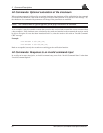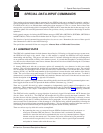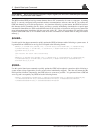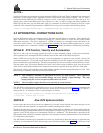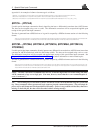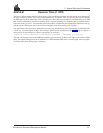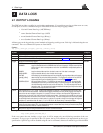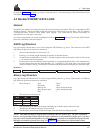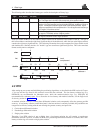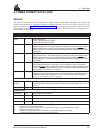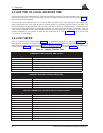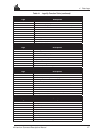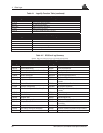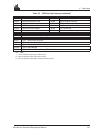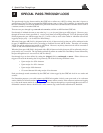
4 Data Logs
24 MiLLennium Command Descriptions Manual
The following table describes the format types used in the description of binary logs.
Each byte within an int has its own address, and the smallest of the addresses is the address of the int. The byte at
this lowest address contains the eight least significant bits of the doubleword, while the byte at the highest address
contains the eight most significant bits. The following illustration shows the arrangement of bytes within words
and doublewords. Similarly the bits of a "double" type are stored least significant byte first. This is the same data
format used by
IBM PC computers.
4.3 RTK
After setting up your system and initializing the positioning algorithms, as described in the RTK section of Chapter
1. You can use the logs listed in this section to record the data collected. The low-latency-solution logs (e.g.
PRTKA/B) are recommended for kinematic users, while the matched-solution logs (e.g. RTKA/B) are
recommended for stationary users. For a discussion on low-latency and matched solutions, see the Differential
Positioning section in Appendix A.
A matched solution is always a carrier-phase differential solution, and consequently offers the greatest possible
accuracy. A low-latency solution, on the other hand, is the best one that is currently available; the possibilities are
categorized as follows, starting with the one offering the greatest accuracy and precision:
1. Carrier-phase differential solution
2. Pseudorange differential solution
3. Single-point solution
Therefore, if an RTK solution is not available, then a low-latency-solution log will contain a pseudorange
differential solution if it exists. If neither an RTK nor a pseudorange differential solution is available, then a low-
latency-solution log will contain a single-point solution.
Type Size (bytes) Size (bits) Description
char 1 8 The char type is used to store the integer value of a member of the representable character
set. That integer value is the ASCII code corresponding to the specified character.
int 4 32 The size of a signed or unsigned int item is the standard size of an integer on a particular
machine. On a 32-bit processor (such as the NovAtel GPSCard), the int type is 32 bits, or
4 bytes. The int types all represent signed values unless specified otherwise. Signed
integers are represented in two's-complement form. The most-significant bit holds the sign:
1 for negative, 0 for positive and zero.
double 8 64 The double type contains 64 bits: 1 for sign, 11 for the exponent, and 52 for the mantissa.
Its range is ±1.7E308 witrh at least 15 digits of precision.
float 4 32 The float type contains 32 bits: 1 for the sign, 8 for the exponent, and 23 for the mantissa.
Its range is ±3.4E38 with at least 7 digits of precision.
70
address n
31
23
15 7 0
62 55 4751 39 31 23
15 7
n+3 n+2 n+1 address n
complement
63 52
n+7 n+6 n+5 n+4 n+3 n+2 n+1
30
n+3
23
22 15 7
0
n+2 n+1 address n
23-bits mantissa
52-bits mantissa
two’s
address n
S
S
char
int
31
Biased
Exponent
Biased
Exponent
double
float
0
0



